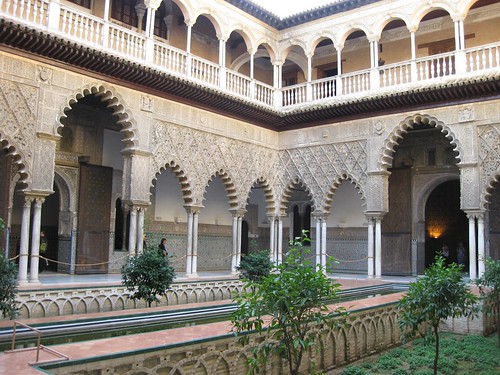
Traveling to the South was a big part of my Sabbatical proposal. For a few hundred years the Moors controlled this area, bringing a variation of Islamic design termed Mudejar. They also reigned over a period of peace where Muslims, Catholics and Jews lived side by side. Of course all good things come to an end/Reconquista and. . . NO ONE EXPECTS THE SPANISH INQUISITION!
Our first site was the Alcazar. An Alcazar is basically a castle/fortress. This one was built by the Moors, and was later turned into a Spanish Royal Palace as they were about to drive the Moors out of Spain. I had been told not to expect much since many alterations had been made by Spanish monarchs. We were floored. The Alcazar is beautiful, and the mixture of styles was exactly what I came to see. Rather than completely redecorate, a unique hybrid had been created. It also boasts some outstanding gardens.
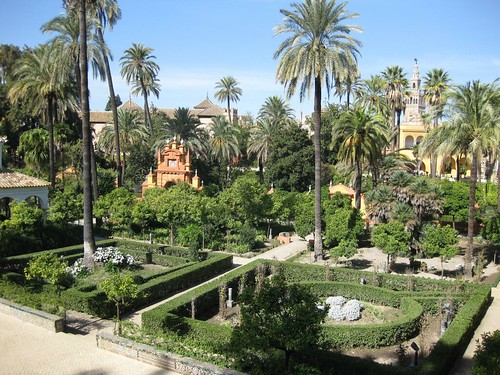
Our next stop was the Cathedral. It was a really large, flamboyant Gothic cathedral. The view from the tower was excellent, and there was some evidence of the earlier Mudejar structure in the arches of the gardens. By the time we were finished we were starving, and I had read about a restaurant nearby that occupied a restored Moorish bath.
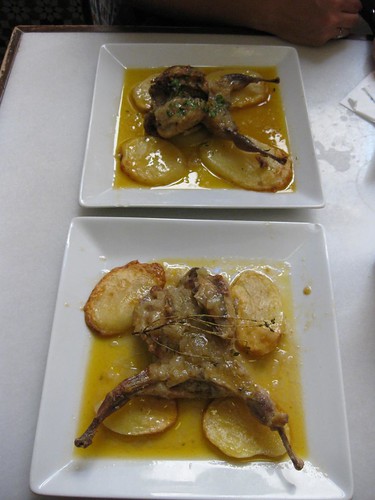
We went a little nuts, ordering a salad and tapas portions of rabbit, duck medallions, octopus, tortilla español, and the two quails above. You can check out more of the meal on my flickr page. When the quails came out I was really worried that we had been misunderstood and got meal portions. As each dish came out I was worried that we would be looking at a bill well over a hundred Euros. It was just over thirty! Yet another great thing about the South is that your Euro goes farther. We took a quick trip to the Archeological museum, and called it an early night. This was our first big travel day of three consecutive long travel days.
The next morning we had to be on a train at seven in the morning for a three-hour ride to Granada. Seville was basically our home base for exploring the South of Spain, and was always going to be our toughest in terms of trains. Granada is a rather sleepy mountain town with one of the most unique sites in the history of art, the Alhambra. This was the last of the Moorish strongholds to fall in 1492. Between that and the whole America thing, it was a pretty good year for the Spanish. We started our day with a climb to the other giant hill in town for a view in front of Saint Nicholas' Church.
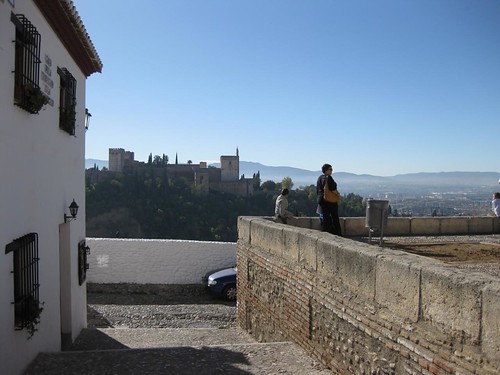
Afterward we visited the Cathedral and had doner kababs. This is the Spanish name for what we call shawarma, and is all the rage in Spain. There are way more doner kabab places than fast food places. We also thought that the eastern flavor was in keeping with the day.

The Alhambra is a walled city that used to support two-thousand people. The detail above is from the Nasrid Palace. It has the finest interiors from the Moorish period in all of Spain, and is shocking in the level and amount of detail. You need advance tickets for this one, and we had bought ours months in advance. If you show up without them you can get a ticket to the surrounding gardens and a later unfinished palace built by Charles V, but you'll be out of luck on the best part.
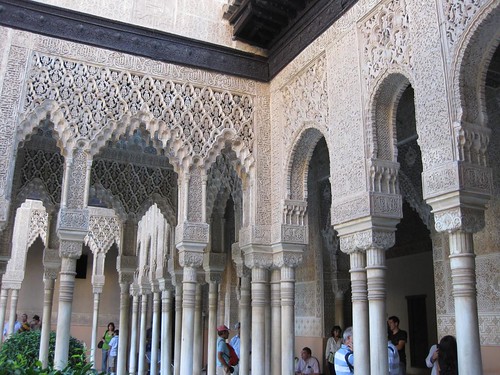
That night we had a train leaving around 8pm and arriving at 11pm. Even rougher, we had to be on a bus for Ronda the next day at 7am! We went to bed dreading the sound of the alarm, but it turned out to much easier to get going than we thought. The main objective in Ronda was getting to the Pileta Cave. You may not be aware of this, but most of the famous paleolithic cave painting sites are now closed to the public. The Pileta caves have some paintings as old as 25,000 years! There is even a rare picture of a fish, as well as horses, goats, people, and lunar calendar markings. We had a rough idea of how the local buses and trains worked, but the online information was scant and didn't include any maps. We knew you could charter a taxi for the trip, but hoped to do it cheaper. When we got there we found out that the local train lines had been suspended, and the caves are 17 km out of town, so a taxi it was. The price was over a hundred US, but included the trip there, back, and a two hour wait for us in the middle of nowhere. The overall sum was the most I had ever paid for a taxi, but also probably the best deal by the minute. It still would have cost more to rent an automatic, and I knew the mountains would be difficult.
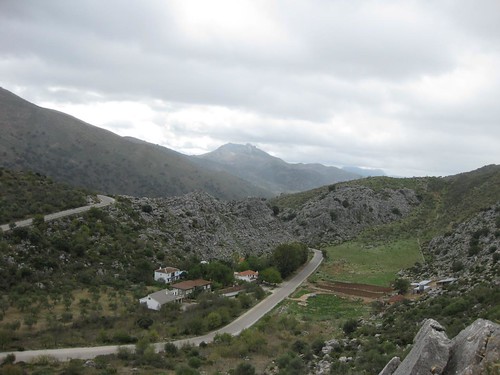
This shot is from right in front of the cave. I would have never found this driving, nor would I have had the balls to take all of those blind curves on that one-lane road. Money well spent. The farmers who own the land give one-hour tours to groups of no more than 25. The whole thing is done by kerosene lamp, and the tour is way more way more dangerous than anything they would let you do in the States for fear of lawsuit. The paintings were excellent, but I was unprepared for the sheer amount of abstract marks, calendars and what appear to be countings. This one won't be available for much longer, I fear, so if you get the chance you need to do it. Part of the conservation of the site means no pictures, but you can check out some of the images at their website.
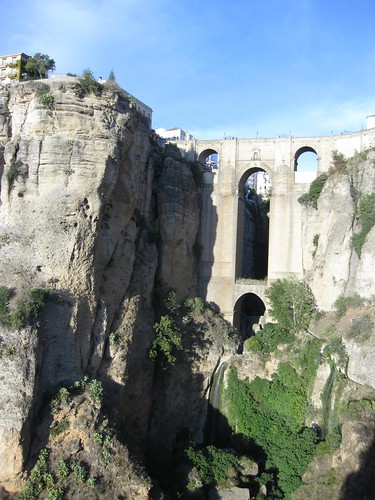
The upside of the more expensive cab was that we got back much quicker than we had expected. This allowed us to check out the very charming town, which had also been a Moorish city. The old city is surrounded either by giant hills or this huge gorge. It's one of the more picturesque white hill towns of Southern Spain. We had the chance to check out the old city walls, and climb a secret Moorish tunnel called the Mine to the bottom of the gorge. They also had these great signs at every park. I don't think I've mentioned the sheer number or volume of dog poo on the streets in Italy and Spain. Suffice to say when Sarah or I warn "poo", the other gets very careful with their footwork.
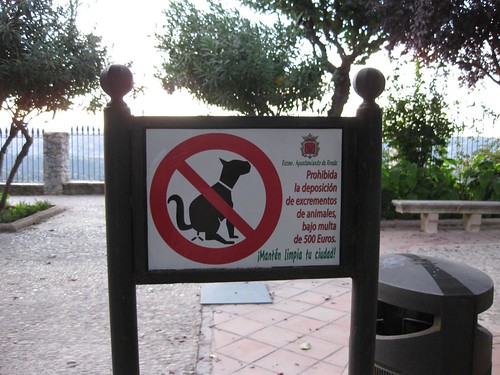
It's a great place, and we felt a little sad leaving, knowing it was so remote that we would probably never make it back. We got on a bus at 7pm and arrived four blocks from our hotel in Seville at 10pm. That may have been the craziest three days of travel I have ever had, and perhaps the most eye-opening.
No comments:
Post a Comment